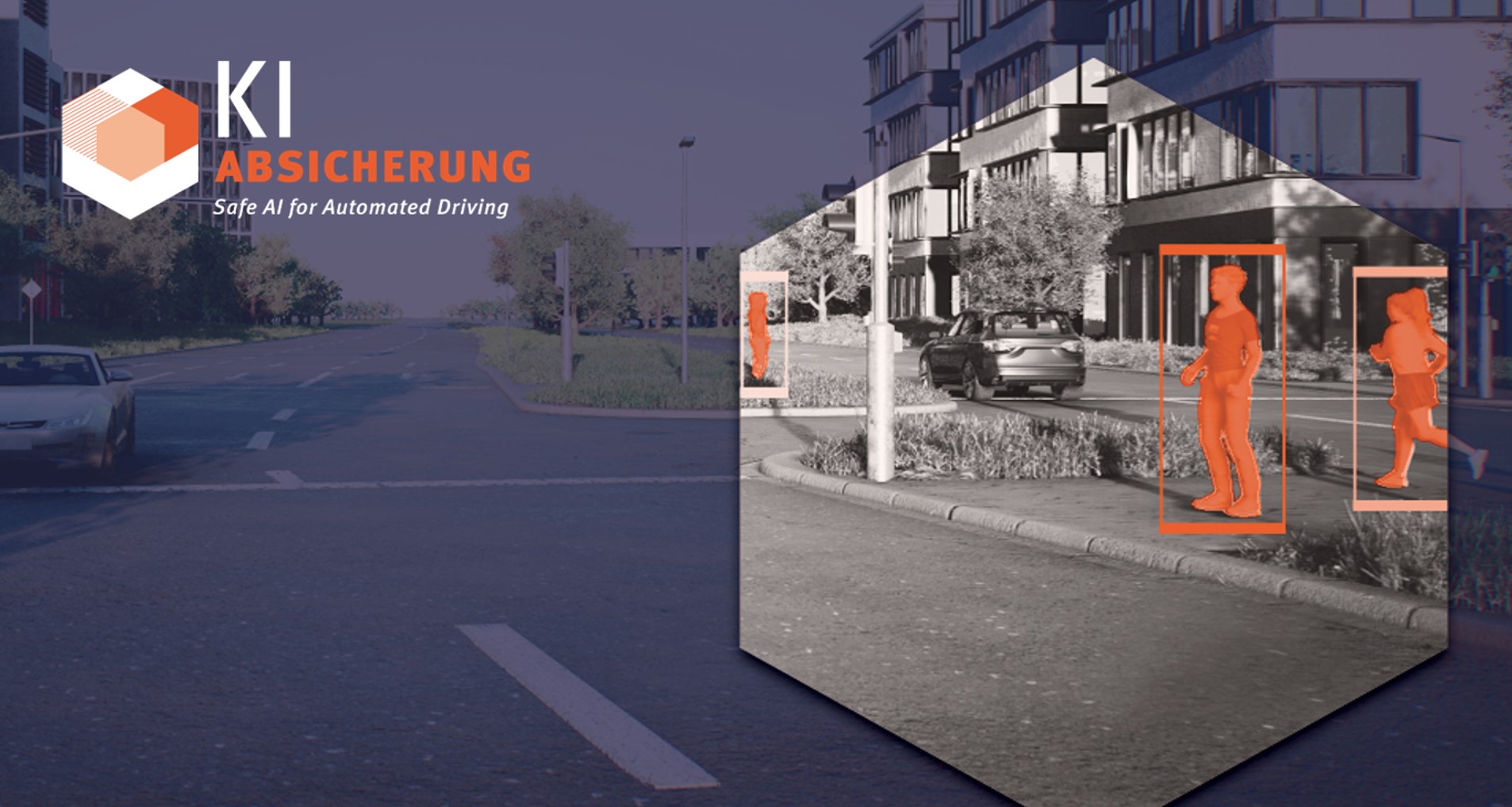KI Absicherung interim presentation, 11th March 2021, Online
KI Absicherung reaches important milestone with interim presentation
On 11th March 2021 KI Absicherung, the largest project of the KI Familie, held its interim presentation to an audience of 250 participants. Due to the pandemic the interim presentation was held online.
The event started with an introduction into the project by its project coordinator Dr. Stephan Scholz, Volkswagen AG. The main ambition of the project is to make the safety of AI-based function modules for highly automated driving verifiable. One of the greatest challenges in integrating AI technologies in highly automated vehicles is to ensure the usual functional safety of previous systems. Existing and established safety processes cannot simply be transferred to machine learning methods. In the KI Absicherung project, a stringent and provable safety argumentation is being set up for the first time, with which AI-based function modules (AI-modules) can be secured and validated for highly automated driving.
The speech was followed by a presentation of the Proof of Project Concept by PD Dr. Michael Mock, Fraunhofer IAIS and Scientific coordinator and consortium co-lead of the project. This concept was successfully carried out to define and exemplify the detailed technical workflow for developing a stringent safety-argumentation for AI-based perception functions in a minimalistic example. It was implemented at the operational level and serves as a blueprint for the collaboration and interaction of all sub-projects of KI Absicherung.
The two introductory lectures were followed by presentations of the four subprojects.
Dr. Loren Schwarz, BMW AG, introduced sub-project 1 "AI-based functions for pedestrian detection". The sub-project he leads develops state-of-the-art algorithms for pedestrian detection and trains them with synthetic data. These are made available to the other subprojects for the development and investigation of safety validation methods. The presentation shows the main building blocks of subproject 1: algorithm development for pedestrian detection, specification of the functional requirements, and provision of the development tools.
Why synthetic learning, testing and validation data is of importance, explained Dr. Thomas Stauner, BMW AG. In subproject 2, which he leads, a tool chain for the production of synthetic data for AI module training and testing is being developed. In addition, a prototypical data set is developed that allows for statements about the suitability of synthetic data as a substitute for real data. The presentation showed the types of groundtruth and metadata supported in the project for safeguarding. In addition, further features of the tool chain and the approach to determine data quality were presented.
The development and evaluation of methods and measures for the verification of the AI function is the topic of subproject 3, led by Dr. Fabian Hüger, Volkswagen AG. In this subproject measures and methods are developed, combined and evaluated with regards to their effectiveness on safety to ultimately determine and reduce systematic insufficiencies of the AI function. Efficacy and safety metrics for AI algorithms are then derived from these. In particular, the presentation explained which specific safety concerns exist in the use of deep neural networks, and how these can be dealt with using selected methods and measures.
The overall safety strategy for the AI function was finally presented by Frédérik Blank, Robert Bosch GmbH and lead of subproject 4 as well as co-lead of subproject 4, Andreas Rohatschek, Robert Bosch GmbH. Main goal of subproject 4 is the formulation of a safety argumentation and exemplary demonstration and implementation of a methodology for the validation of the technical safety requirements and the sufficient mitigation of systematic insufficiencies of the AI function.
Following the respective presentations, the participants were able to ask questions and discuss the topics with the speakers.
In the second part of the event, 11 parallel topic sessions provided deeper insights into various aspects of the current project work. After short presentations, the topics were discussed with experts from the other projects of the KI Familie, among others, in order to identify possible synergies and for knowledge transfer across projects.
In their closing remarks, Dr Stephan Scholz and PD Dr. Michael Mock thanked the participants for their great interest and the fruitful exchange. This exchange will make an important contribution to bringing autonomous driving onto the roads: KI Absicherung works on a central challenge with the safety argumentation, but it is by far not the only one that has to be solved on the way. The harmonisation and compatibility of the results of the various projects of the VDA Leitinitiative ensures that the long-term goal can be achieved through joint, coordinated efforts without detours.
The overview presentations and those of the subprojects can be found here:
 |  |
 |  |
 |  |
